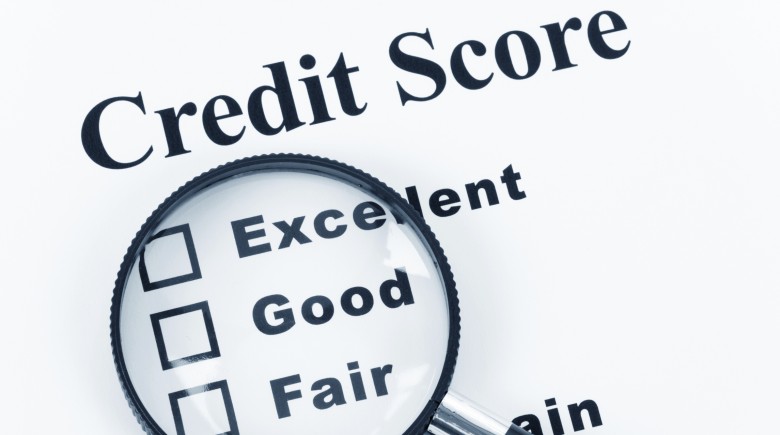Credit scores are rapidly becoming one of the most important financial assets for American consumers. This is why a knowledge of credit score basics is so essential. In the past, lenders used this score to determine the creditworthiness of a potential borrower, which would then determine the terms of any loan that they would offer to this person. Now, credit scores are now sought after by potential employers and other retail providers, such as insurance companies, to find out whether a potential customer or employee has been able to pay their bills on time consistently. The use of credit scores will likely continue to broaden in scope, so, among the credit score basics, it is important for consumers to understand how this score is created and its impact upon their finances.
There are three major credit reporting agencies that compile information on consumers and assign them a score based on the data they collect: Transunion, Equifax and Experian. These three companies keep records of the payment histories of millions of consumers and provide them to consumers, employers, lenders and other parties upon request. These records are known as credit reports, which are then used to compute credit scores. These reports contain a great deal of data, such as:
- The number of times that you have applied for credit;
- The number of accounts that you have opened and closed;
- The amount of credit available to you;
- The amount of debt you carry compared to your available credit;
- The type of debt you carry (credit card, mortgage, car loan, etc.); and
- Your payment history.
The only website that provides consumers with a truly free copy of their report from each agency is www.annualcreditreport.com. Each of these firms uses a slightly different (and secret) formula that is based upon their statistical analysis of this data to determine the score they assign to a consumer. Factors that affect these calculations include the number of late vs. on time payments, tax liens and levies, garnishments and bankruptcies as well as accounts that have been paid off in full, the length of your credit history and other events that denote an ability or inability to pay off debts. But the general criteria that they use for their formulas can be broken down as follows:
- 10% of the score comes from the number of requests for new credit by a consumer
- 10% is the types of credit that are being used (secured credit such as car loans is considered superior to unsecured debt such as credit cards)
- 15% is the length of the consumer’s credit history
- 30% is the amount of total current debt
- 35% is the consumer’s payment history (weighted towards recent history)
Late payments will immediately lower the score, as will opening or applying for several new credit accounts within a short period of time. The range for credit scores is 350 to 850, with 350 being the lowest and 850 the highest possible score. Most people fall somewhere in the middle of this range; those with scores between 350 and 600 represent delinquent borrowers who have poor payment histories and red flags such as bankruptcies and repossessions on their reports. Average borrowers fall into the 600-720 range and those with good credit have scores between 720 and 850. Knowing your credit score basics can really help you out, as credit scores are used by a growing number of retailers and employers as well as lenders.
Credit scores are rapidly becoming one of the most important financial assets for American consumers. This is why a knowledge of credit score basics is so essential. In the past, lenders used this score to determine the creditworthiness of a potential borrower, which would then determine the terms of any loan that they would offer to this person. Now, credit scores are now sought after by potential employers and other retail providers, such as insurance companies, to find out whether a potential customer or employee has been able to pay their bills on time consistently. The use of credit scores will likely continue to broaden in scope, so, among the credit score basics, it is important for consumers to understand how this score is created and its impact upon their finances.
There are three major credit reporting agencies that compile information on consumers and assign them a score based on the data they collect: Transunion, Equifax and Experian. These three companies keep records of the payment histories of millions of consumers and provide them to consumers, employers, lenders and other parties upon request. These records are known as credit reports, which are then used to compute credit scores. These reports contain a great deal of data, such as:
- The number of times that you have applied for credit;
- The number of accounts that you have opened and closed;
- The amount of credit available to you;
- The amount of debt you carry compared to your available credit;
- The type of debt you carry (credit card, mortgage, car loan, etc.); and
- Your payment history.
The only website that provides consumers with a truly free copy of their report from each agency is www.annualcreditreport.com. Each of these firms uses a slightly different (and secret) formula that is based upon their statistical analysis of this data to determine the score they assign to a consumer. Factors that affect these calculations include the number of late vs. on time payments, tax liens and levies, garnishments and bankruptcies as well as accounts that have been paid off in full, the length of your credit history and other events that denote an ability or inability to pay off debts. But the general criteria that they use for their formulas can be broken down as follows:
- 10% of the score comes from the number of requests for new credit by a consumer
- 10% is the types of credit that are being used (secured credit such as car loans is considered superior to unsecured debt such as credit cards)
- 15% is the length of the consumer’s credit history
- 30% is the amount of total current debt
- 35% is the consumer’s payment history (weighted towards recent history)
Late payments will immediately lower the score, as will opening or applying for several new credit accounts within a short period of time. The range for credit scores is 350 to 850, with 350 being the lowest and 850 the highest possible score. Most people fall somewhere in the middle of this range; those with scores between 350 and 600 represent delinquent borrowers who have poor payment histories and red flags such as bankruptcies and repossessions on their reports. Average borrowers fall into the 600-720 range and those with good credit have scores between 720 and 850. Knowing your credit score basics can really help you out, as credit scores are used by a growing number of retailers and employers as well as lenders.







